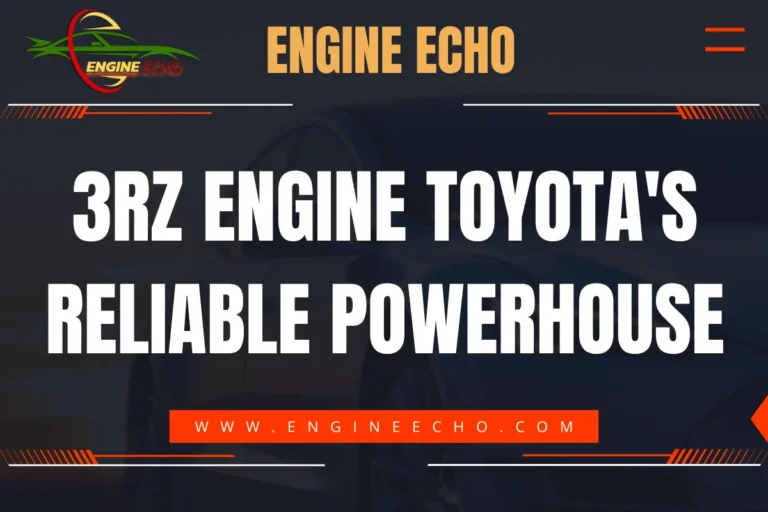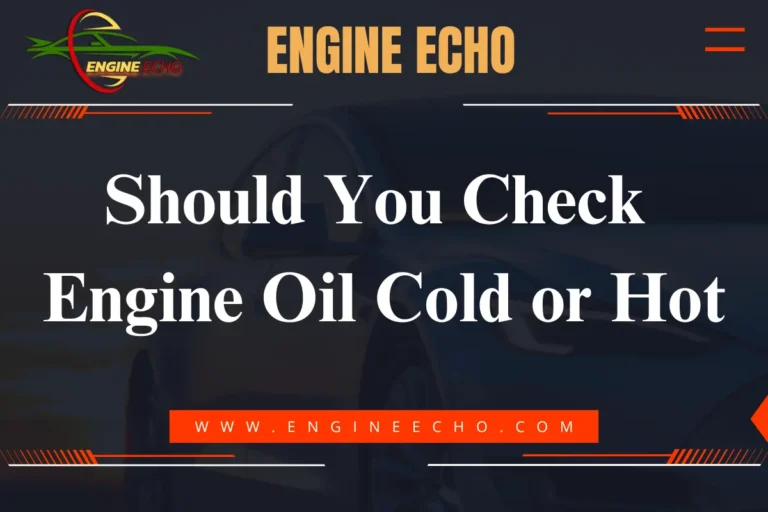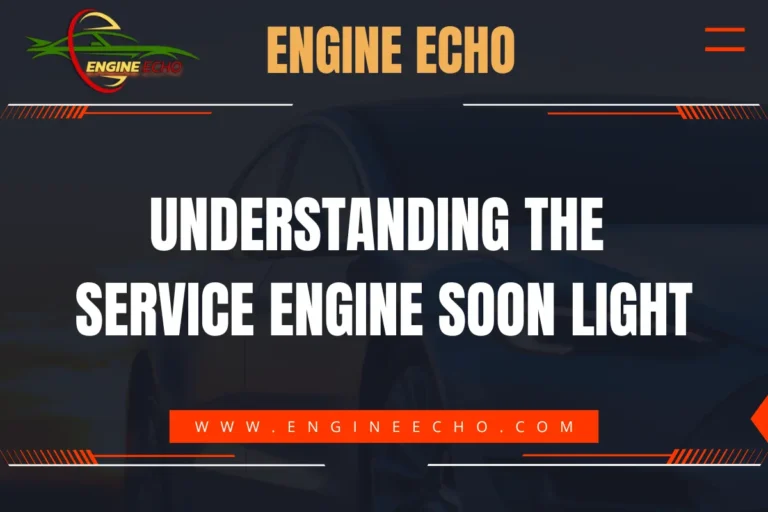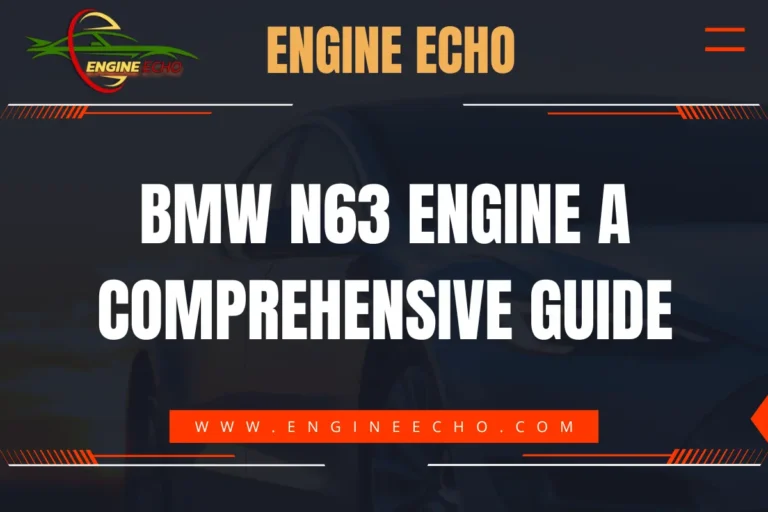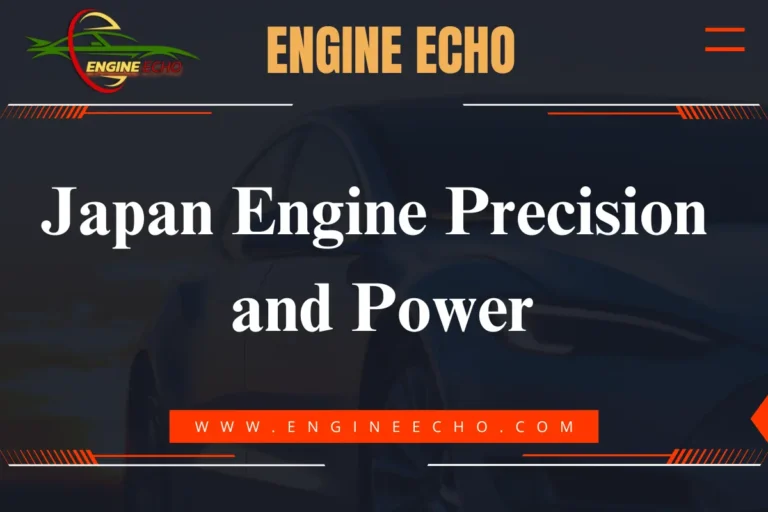Aircooled VW Engine: A Classic Powerhouse
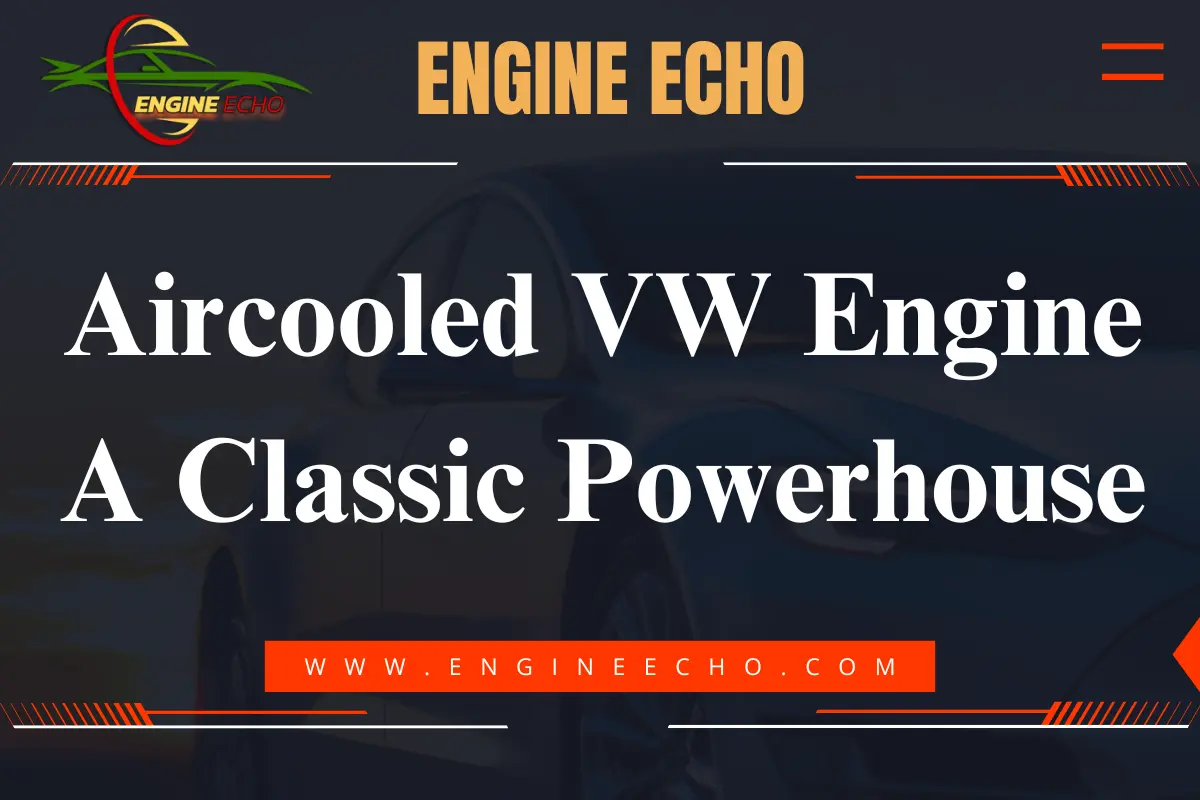
Key Takeaways:
- The aircooled VW engine’s simple yet robust design made it an icon in automotive history.
- Its evolution from early Beetle models to more advanced aircooled systems shows Volkswagen’s knack for innovation.
- Regular maintenance, such as oil changes and valve adjustments, is essential for keeping it running smoothly.
- Upgrades and modifications can significantly boost engine performance, making them a favorite among enthusiasts.
- Despite modern advancements, aircooled VW engines maintain a loyal global following because of their charm, simplicity, and nostalgia.
Introduction
The aircooled VW engine isn’t just any engine—it’s an icon, a piece of automotive history that’s still turning heads today. I’ve always been fascinated by its simplicity and durability. There’s something about that raw, mechanical hum that connects you to the road in a way that modern engines just can’t. Whether you’re cruising in a Beetle or a Type 2 Bus, the connection you feel with these machines is something special. In this article, I’ll walk you through why this engine became an icon, how it evolved, and why it still captures the hearts of enthusiasts like me.
1. Design and Functionality of Aircooled VW Engines
Basic Principles of Air Cooling
Aircooled VW engines are as simple as they are clever. Instead of relying on complex radiators or coolant systems, they use air to keep things running smoothly. Fans and tinware direct airflow over the engine’s hot spots to regulate temperature. It’s a system that gets the job done without all the extra fuss—and fewer parts to worry about breaking down is always a plus.
Key Components
- Crankshaft and Cylinder Heads: The crankshaft drives the engine, while the cylinder heads handle the airflow, making sure everything works in sync.
- Pistons and Valves: These are the workhorses, compressing the air-fuel mixture and keeping the engine running.
- Fan and Tinware: These parts are the unsung heroes, making sure cool air flows exactly where it needs to keep the engine humming along.
Advantages
- Simplicity: Fewer moving parts mean fewer things can go wrong, and for DIY mechanics like me, that’s a huge advantage.
- Durability: These engines have a reputation for lasting decades, often hitting 200,000 miles or more with regular care. I’ve personally seen this happen, and it never fails to impress.
- Cost-Effectiveness: Repairs and maintenance won’t break the bank, which is one of the reasons I love working on these engines.
2. Evolution of the Aircooled VW Engine
Early Models
The aircooled VW engine got its start in the 1930s with the original Beetle, designed by Ferdinand Porsche. Back then, the engine produced just 25 horsepower, but it was enough to make the Beetle a reliable and affordable vehicle for the masses.
Notable Advancements
As the years went by, Volkswagen continued to refine the engine, increasing both its power and efficiency. By the 1960s, it had grown into 1200cc and 1600cc variants, offering better performance while still keeping things simple. I remember restoring a 1600cc engine for a friend—it had been sitting for years, but after a little TLC, it purred like new.
Significant Models
- 1100cc engine: Powered the earliest Beetles, a true piece of automotive history.
- 1200cc engine: A solid upgrade in the 1960s, offering more oomph.
- 1600cc engine: My personal favorite. It strikes the perfect balance between power and reliability, and once you’ve driven one, it’s easy to see why so many people love it.
3. Performance Metrics of Aircooled VW Engines
Horsepower and Torque
Sure, aircooled VW engines won’t blow you away with high horsepower numbers. The original 1100cc engine delivered just 25 horsepower, while the later 1600cc models pushed around 50. But what they lack in raw power, they make up for with consistent torque, giving you enough pull to enjoy the ride.
Fuel Efficiency
Back in their heyday, these engines were pretty efficient. You could expect 25-30 miles per gallon, which, at the time, was excellent. Today, it’s not exactly groundbreaking, but it’s still solid for a weekend cruiser.
Durability and Longevity
One thing that hasn’t changed is their longevity. With regular maintenance, these engines can easily last over 200,000 miles. I’ve personally known people who’ve hit that milestone, and their engines are still going strong.
4. Maintenance of Aircooled VW Engines
Routine Care
Keeping an aircooled VW engine in good shape isn’t rocket science, but it does take consistency:
- Oil changes: Every 3,000 miles is a must. Fresh oil keeps everything running smoothly.
- Valve adjustments: I usually do these every 6,000 miles, and it makes a noticeable difference in performance.
- Spark plugs: These are simple to replace and make sure your engine starts reliably.
Cooling System Checks
One of the things I love about aircooled engines is that their cooling system is incredibly low maintenance compared to liquid-cooled engines. But there are a few things you need to keep an eye on:
- Fan belts: Always check for wear and tear—if a belt snaps, you’re in for a hot (and not in a good way) drive.
- Air filters: Clean or replace them regularly to keep debris out of the engine.
- Tinware: Missing pieces of tin can disrupt airflow, causing overheating, so regular checks are key.
Troubleshooting Common Issues
I’ve spent my fair share of weekends troubleshooting these engines, and the great thing is that the issues are usually easy to pinpoint. Overheating? Probably a fan belt or a missing piece of tinware. Oil leaks? You’re likely looking at worn seals. These engines are as straightforward as they come, which makes working on them a satisfying experience.
5. Modifications and Upgrades for Performance Enthusiasts
Performance Carburetors and Exhaust Systems
One of the first mods I made to my VW engine was swapping in dual Weber carbs. It gave the engine more punch, especially at higher RPMs. Pairing that with an aftermarket exhaust system gave it a growl that I can still hear in my head.
Cylinder Head and Piston Upgrades
For those looking to add more power, increasing the engine displacement to 1776cc or even 1915cc is a game-changer. I’ll never forget the first time I drove a 1915cc—it felt like a whole new world. Higher compression pistons help too, giving you more bang for your buck.
Suspension and Transmission Tuning
Upgrading the suspension and tuning the transmission lets you make the most of those engine upgrades. I did this on my own ride, and it made every drive smoother and way more fun, especially when taking tight corners.
6. Popular Aircooled VW Models Powered by These Engines
Volkswagen Beetle
The Beetle is the most recognizable car in the world, and with its iconic aircooled engine, it’s easy to see why. I’ve driven several Beetles over the years, and each one has a unique feel. It’s the kind of car that sticks with you long after you’ve parked it.
Volkswagen Type 2 Bus
The Type 2 Bus, or Kombi, holds a special place in my heart. There’s something magical about cruising in one of these, the aircooled engine humming along behind you. I’ve spent countless weekends working on mine, and it’s always worth the effort.
Karmann Ghia
The Karmann Ghia is where style meets substance. It’s sleek, sporty, and powered by the same trusty aircooled engine. Driving one feels like you’re in something special—and honestly, you are.
7. Restoring Aircooled VW Engines
Parts Availability
Restoring an aircooled VW engine is easier than you might think, thanks to a huge community of suppliers. Whether you’re after OEM or aftermarket parts, they’re out there. I’ve had great luck tracking down parts online, and once you’ve got them, it’s just a matter of putting in the work.
Restoration Tips
- Check for cracks in the engine block: I once restored a 1600cc engine with a hairline crack in the block—it’s always worth inspecting everything closely.
- Clean everything: Carbon deposits and dirt can build up over time, so make sure to give everything a thorough clean.
Costs
Restoring one of these engines isn’t cheap, but it’s worth it. Depending on the condition and how far you want to go, you could spend anywhere from $1,500 to $5,000. Personally, I think it’s a small price to pay for breathing new life into such a classic piece of machinery.
8. The Legacy of the Aircooled VW Engine
Cultural Impact
There’s a reason these engines are still so beloved. They represent an era of simple, practical design that just works. The aircooled VW engine isn’t just a machine—it’s a symbol of an entire generation of cars that shaped automotive history. And as someone who’s worked on and driven these engines, I can tell you, that legacy is well deserved.
Global Community of Enthusiasts
I’ve met so many incredible people through the aircooled VW community. From online forums to local car meets, there’s a camaraderie among enthusiasts that’s hard to find elsewhere. Whether you’re swapping stories, advice, or parts, the aircooled VW community feels like a second family.
9. Comparison with Modern Engines
Advantages of Aircooled Engines
There’s something to be said for simplicity. Aircooled engines are easy to work on, and you don’t need a bunch of fancy tools to fix them. For me, the satisfaction of being able to repair and maintain an engine with just a few basic tools is what makes aircooled engines so special.
Drawbacks
Of course, they’re not as powerful or fuel-efficient as modern engines. But if you’re driving one of these cars, chances are you’re not too worried about raw power—you’re in it for the experience.
Why They’re Still Popular
Nostalgia plays a huge role here, but it’s also about the charm and ease of use. In a world where everything is computerized, there’s something refreshing about working on an engine you can fully understand. That’s why I keep coming back to aircooled VW engines—they offer a connection to the car that modern engines just can’t match.
10. Environmental Impact of Aircooled Engines
Fuel Consumption
Compared to modern engines, aircooled engines aren’t exactly fuel-efficient. But if you’re only taking your VW out for the occasional cruise, the environmental impact is pretty minimal.
Emissions
Yes, aircooled engines produce more emissions than today’s cars, but enthusiasts like myself are finding ways to reduce this, from tuning carburetors to using cleaner-burning fuel. It’s all about finding a balance between keeping the classic spirit alive and being mindful of the planet.
11. Future of Aircooled VW Engines
Electric Conversions
I’ve noticed more and more VW owners converting their aircooled engines to electric. While I personally love the sound and feel of the original engine, I can see why people are making the switch. It’s a way to keep these classics on the road in an eco-friendly way.
Preservation Efforts
From museums to local car clubs, efforts to preserve these engines are everywhere. It’s heartening to see how many people are dedicated to keeping this piece of history alive, and I think it’s a tradition that will continue for years to come.
The Role of Technology
As technology advances, we’re finding ways to improve the reliability and efficiency of these engines without compromising their classic design. I’ve been experimenting with modern parts that enhance performance while staying true to the engine’s roots—it’s the perfect blend of old and new.
Conclusion
For me, the aircooled VW engine isn’t just a piece of machinery—it’s a connection to a simpler time, a symbol of smart engineering that’s stood the test of time. Whether you’re new to these engines or have been working on them for years, the joy they bring is unmatched. And trust me, once you’ve experienced that unique hum of an aircooled engine, you’ll understand why they’re still so beloved.
Frequently Asked Questions (FAQs)
- What is the main difference between aircooled and liquid-cooled engines?
Aircooled engines rely on airflow to cool the engine, while liquid-cooled engines use coolant to manage heat. - How long does an aircooled VW engine last with proper maintenance?
If you take care of it, these engines can last over 200,000 miles—I’ve seen it happen many times. - Can I modify an aircooled VW engine to improve its performance?
Absolutely! Upgrading components like carburetors, exhaust systems, and pistons can significantly boost performance. - Why are aircooled VW engines still popular among car enthusiasts?
Their simplicity, ease of repair, and the strong community surrounding them make them a favorite among vintage car enthusiasts. - Are there environmental concerns with driving an aircooled VW vehicle?
Yes, aircooled engines produce more emissions compared to modern engines, but sustainable practices and tuning can help reduce the impact.
Thanks for checking out this article on EngineEcho.com! Hope you found this article: "Aircooled VW Engine: A Classic Powerhouse" helpful! If you liked it and want to dive into more car engine topics, head over to our homepage. There's always something new to discover in the world of engines. Enjoy your reading journey!
Check out our previous article: Best Deals on VW Air Cooled Engines

